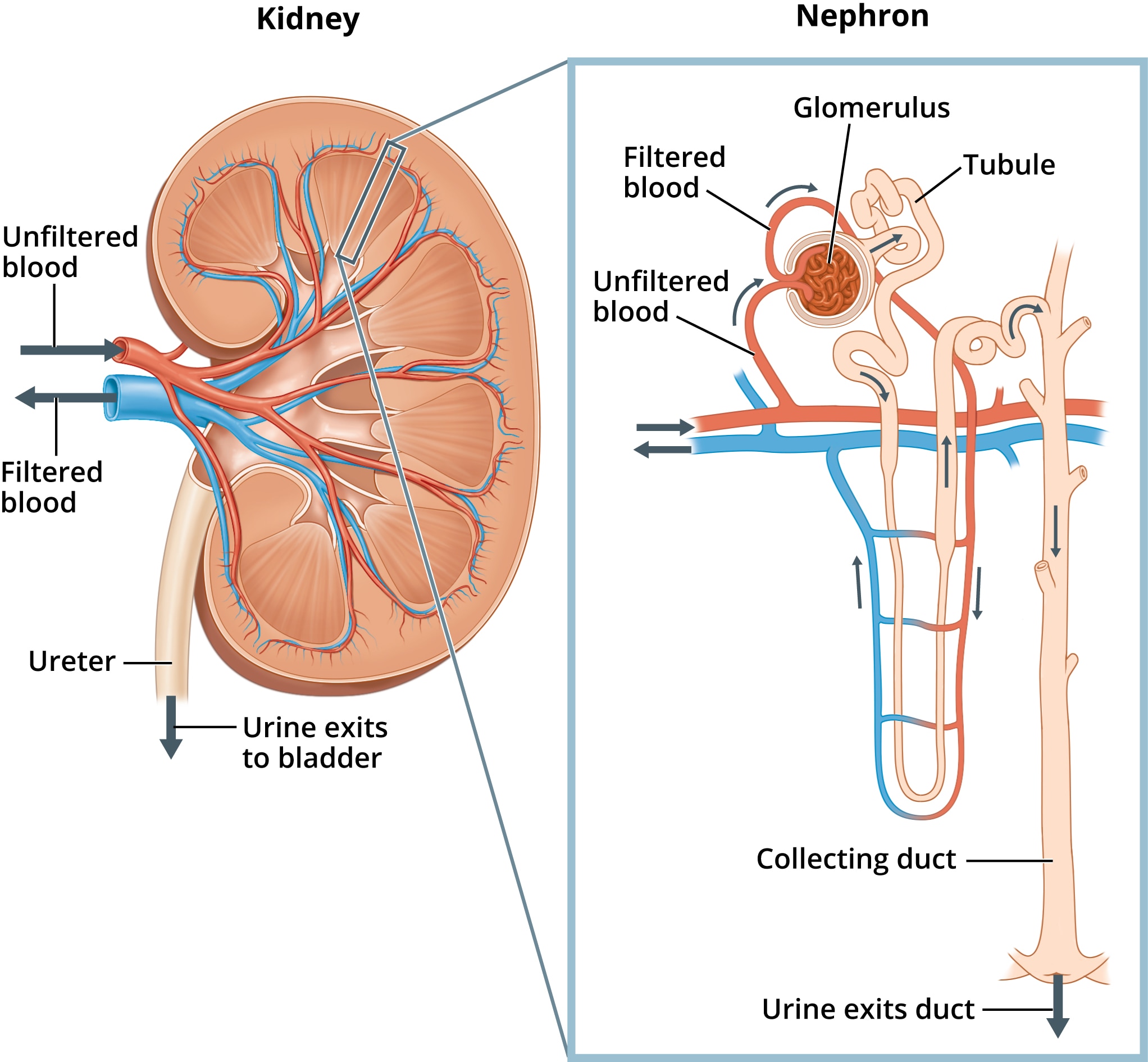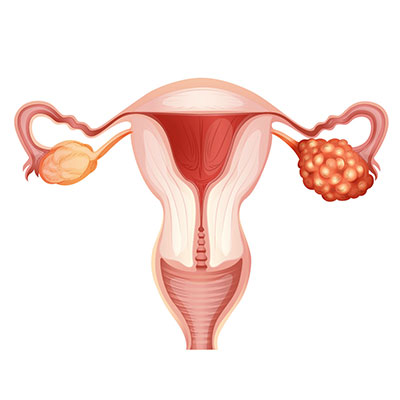Nephrotic Syndrome: Understanding the Causes, Symptoms, and Treatment Approaches"
Nephrotic Syndrome: Understanding the Causes, Symptoms, and Treatment Approaches"
KARAGANDA MEDICAL UNIVERSITY
Mohammad Afjal
Article on Nephrotic syndrome
Abstract
Nephrotic syndrome is an important presentation of glomerular disease characterised by heavy proteinuria, hypoalbuminaemia and oedema. The differential diagnosis of the underlying condition is wide including primary renal disorders and secondary diseases such as malignancy, infection, diabetes and amyloid. Presentations to acute medicine may be with hypervolaemia, complications of the nephrotic state (such as venous thromboembolism), or complications of therapy (such as infection).
Early recognition of nephrotic syndrome is possible through simple urinalysis for protein and testing serum albumin, although a high index of suspicion is sometimes required in patients with comorbidities including potentially distracting cardiac or hepatic diseases.
Introduction
Nephrotic syndrome is defined by the triad of heavy proteinuria (≥3g/24 hours), hypoalbuminaemia (≤25g/L) and oedema. It may affect children and adults of all ages, occurring either as a primary renal disorder, or as a manifestation of systemic disease, malignancy or the unintended consequence of medication. Patients may present with oedema, typically peri-orbital or at dependent sites; other manifestations of hypervolaemia (e.g. ascites); or with complications of their nephrotic state, such as venous thromboembolism. While an uncommon presentation to acute medical services, early recognition will facilitate expedient diagnosis, specialist management and potentially prevent complications.
Epidemiology-
The annual incidence of NS in adults is three per 100,000 persons. Approximately 80% to 90% of NS cases in adults are idiopathic. Membranous nephropathy is the most common cause in whites, and focal segmental glomerulosclerosis is most common in blacks; each of these disorders accounts for approximately 30% to 35% of NS cases in adults. Minimal change disease and immunoglobulin A nephropathy each account for approximately 15% of cases. The remaining 10% of cases are secondary to an underlying medical condition.
Pathophysiology-
The mechanism of edema formation in NS is unclear. The primary defect seems to be increased glomerular permeability to albumin and other plasma proteins. Primary renal sodium retention and decreased oncotic pressure from hypoalbuminemia lead to increased extravasation of fluid from the intravascular space into the interstitial space, resulting in edema.4
The pathophysiology of thrombogenesis in NS is also not completely understood but seems to be multifactorial, involving loss of coagulation regulatory proteins and a shift in the hemostatic balance toward a prothrombotic milieu.5 Patients with NS and prothrombotic genetic mutations have a further increased risk of thrombosis.
Causes:
The underlying cause of nephrotic syndrome is damage to the glomeruli, which are small, specialized structures in the kidneys responsible for filtering blood. Damage to the glomeruli can be caused by a variety of factors, including:
Minimal change disease: This is the most common cause of nephrotic syndrome in children. The exact cause of this condition is not known, but it is believed to be related to an abnormal immune response.
Focal segmental glomerulosclerosis: This condition is more common in adults and is characterized by scarring in some of the glomeruli. It can be caused by a variety of factors, including viral infections, drug use, and genetic factors.
Membranous nephropathy: This is a condition in which the immune system attacks the glomeruli, causing inflammation and damage.
Diabetes: Diabetes is a leading cause of kidney disease, including nephrotic syndrome. High blood sugar levels can damage the glomeruli over time, leading to nephrotic syndrome.
Lupus: Systemic lupus erythematosus (SLE) is an autoimmune disorder that can cause damage to the kidneys, leading to nephrotic syndrome.
Symptoms:
The symptoms of nephrotic syndrome can vary depending on the underlying cause and severity of the condition.
Common symptoms include:
Swelling in the legs, feet, and ankles
Swelling in the abdomen
Fatigue and weakness
Loss of appetite
Foamy urine
Weight gain
Hypertension (high blood pressure)
Diagnosis:
To diagnose nephrotic syndrome, a doctor will perform a physical exam and order several tests, including:
Urine tests: A urine test can show increased protein levels in the urine, which is a hallmark of nephrotic syndrome.
Blood tests: Blood tests can show low levels of albumin, high levels of cholesterol and triglycerides, and other abnormalities that can indicate nephrotic syndrome.
Kidney biopsy: In some cases, a kidney biopsy may be necessary to confirm the diagnosis and determine the underlying cause of the condition.
Ultrasonography: Individuals with a single kidney may be prone to developing focal glomerulosclerosis; having only one kidney is also a relative contraindication to kidney biopsy. Ultrasonography also demonstrates renal echogenicity. Increased renal echogenicity is consistent with intrarenal fibrosis.
Treatment:
The treatment of nephrotic syndrome depends on the underlying cause and severity of the condition. Common treatments include:
Corticosteroids: These drugs can help reduce inflammation and decrease proteinuria (protein in the urine) in some cases of nephrotic syndrome.
Immunosuppressants: These drugs can help control the immune system and prevent it from attacking the kidneys.
Diuretics: These drugs can help reduce edema by increasing urine output.
ACE inhibitors or angiotensin receptor blockers: These drugs can help control blood pressure and protect the kidneys from further damage.
In severe cases of nephrotic syndrome, hospitalization may be necessary to manage complications such as blood clots or infections.
Prognosis
The prognosis for NS is highly dependent on the underlying cause, the disease histology, and patient clinical factors. Although many patients improve with appropriate supportive care and do not require any specific therapy, others worsen despite aggressive, specific therapy and may require dialysis. In one study, routine treatment with an angiotensin-converting enzyme inhibitor or angiotensin receptor blocker, plus selective use of corticosteroids or other immunosuppressants, led to a remission rate of 76%, with 12% of patients requiring hemodialysis.16
Idiopathic membranous nephropathy is one of the most common forms of primary NS in adults, and has a generally favorable prognosis.15 The prognosis for this illness roughly follows a “rule of thirds”: about one-third of patients have a benign course with a high rate of remission; one-third have ongoing evidence of proteinuria or edema but maintain normal renal function; and somewhat less than one-third of patients progress toward end-stage renal disease within 10 years.15
Adults with primary focal segmental glomerulosclerosis, however, tend to have a poorer prognosis, and the degree of proteinuria is a significant prognostic factor. Although about one-half of patients with nephrotic-range proteinuria progress to end-stage renal disease over five to 10 years, patients with very heavy proteinuria (10 to 14 g per day) will develop end-stage renal disease on average within two to three years.
Conclusion:
Nephrotic syndrome is a serious condition that can lead to complications if left untreated. If you are experiencing symptoms of nephrotic syndrome, it is important to seek medical attention promptly to determine the underlying cause and receive appropriate treatment. With proper management, many people with nephrotic syndrome are able to live healthy, active lives.
References:
Hull RP, Goldsmith DJ. Nephrotic syndrome in adults. BMJ. 2008;336(7654):1185-1189.
Williams WW, Ecker JL, Thadhani RI, Rahemtullah A. Case records of the Massachusetts General Hospital. Case 38-2005. A 29-year-old
pregnant woman with the nephrotic syndrome and hypertension. N Engl J Med. 2005;353(24):.
Floege J. Introduction to glomerular disease: clinical presentations. In: Johnson RJ, Feehally J, Floege J, eds. Comprehensive Clinical Nephrology. 5th ed. Philadelphia, Pa.: Elsevier Saunders; 2015.
Siddall EC, Radhakrishnan J. The pathophysiology of edema formation in the nephrotic syndrome. Kidney Int. 2012;82(6):635-642.
Kerlin BA, Ayoob R, Smoyer WE. Epidemiology and pathophysiology of nephrotic syndrome-associated thromboembolic disease. Clin J Am Soc Nephrol. 2012;7(3):513-520.
Kayali F, Najjar R, Aswad F, Matta F, Stein PD. Venous thromboembolism in patients hospitalized with nephrotic syndrome. Am J Med. 2008;121(3):226-230.
Pincus KJ, Hynicka LM. Prophylaxis of thromboembolic events in patients with nephrotic syndrome. Ann Pharmacother. 2013;47(5):725-734.
National Kidney Foundation.
Nephrotic Syndrome. Accessed April 28, 2023. https://.
nephrotic
Mayo Clinic. Nephrotic Syndrome.
Accessed April 28, 2023. https:// symptoms-causes/syc-20375608
MedlinePlus. Nephrotic Syndrome.
Accessed April 28, 2023. https:// medlineplus.gov/ nephroticsyndrome.html

Articles from Afjal Ali
View blog
Karaganda medical university · corrosponding author - Mohammad Afjal · Ovarian cancer · Abstract - · ...

Abstract: · Gastric cancer is a significant health concern worldwide and is responsible for a high n ...

"The Burning Truth About Gastric Ulcers: Causes, Symptoms, and Treatment Options" · Karaganda medica ...
Related professionals
You may be interested in these jobs
-

Shift Incharge
14 hours ago
Direct apply
VARDHMAN SPECIAL STEELS Ludhiana, Punjab, IndiaAvailability to work different shifts, Team management abilities, ensure industry rules and regulations are followed, Handle customer and employee complaints etc._**Vacancy**_ is in _**Research & Development, Rolling Mill & CFD Department.**_ · **Job Types**: Full-time, Permanent ...
-
Software Engineer
1 day ago
FX Consulting Bengaluru, India permanentRequirements: · - 5+ years of experience as a Python Developer with a strong portfolio of projects. · - Bachelor's degree in Computer Science, Software Engineering, or a related field. · - Work with different teams to design, develop and test software systems and applications · - ...
-

Chemistry Typing
14 hours ago
Direct apply
Testline Sikar, India**Responsibilities**: · - Inputting, updating, and maintaining accurate data into our database systems. · - Proficient use of Microsoft Office Suite, particularly Excel, for data entry, analysis, and reporting. · - Editing documents, ensuring accuracy, clarity, and consistency in ...

Comments